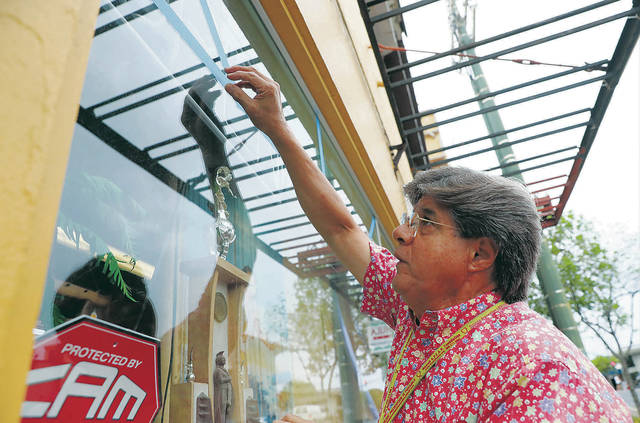Hawaii now breathes a sigh of relief that Lane ultimately pulled its punches, but islanders must remain alert to the next storms already brewing in the Pacific: It’s still hurricane season, through November, and it’s too early to quit.
Further, it’s time to recognize that many residents, those in parts of Hawaii island and Maui, were not so lucky. Even if what was originally a Category 5 hurricane never made landfall, the devastation of the torrential rains translates into a direct hit for those people.
Hana and especially Hilo bore the brunt of what was recorded as the third-highest rainfall total from a U.S. tropical cyclone for the past 68 years.
Near Lahaina, that rain did eventually help control three brush fires that destroyed 21 structures as well as vehicles. The displacement and upheaval of those families were tragic, and the fire came perilously close to spreading toward the town center, even approaching a gas station.
As Maui Mayor Alan Arakawa explained, there had been the possibility that the blaze could have threatened Lahaina more broadly, necessitating the evacuation of 20,000 people. Due to the work of firefighters and officials, Maui was spared that catastrophe.
Despite the fact that Hawaii residents were not struck physically as hard as initially feared, it’s easy to be awestruck by the strength of such natural forces, even when they’re blunted. That realization should underscore the importance of robust and coordinated emergency preparations. Statewide, performance by the county-state-
federal consortium was impressive.
On Oahu there was bus service to enable transit from shelters and frequent advisories that evacuees would need to bring their own supplies. County and state employees were told to stay home starting Thursday, ahead of Lane. As things played out, their dismissal may have come a bit early because the storm’s advance had slowed. Still, those who recall the lead-up to previous disasters have to see the advantage of thinning out traffic gradually. It avoids the eleventh-hour crunch that has resulted in the past.
A crisis team from the Federal Emergency Management Agency came out prepared to contend with a fierce storm, determined not to repeat the errors in its response to Puerto Rico following Hurricane Maria, a year earlier. Here, FEMA was gearing up to secure the food, water and supplies that could be needed.
Even if widespread devastation turned out not to be the case — fortunately — FEMA officials still have a job to do, as Hawaii’s congressional delegation has reminded them pointedly. The lawmakers acknowledged the agency’s help to communities in its initial storm outreach in a letter to Brock Long, FEMA administrator.
“Now that Lane has passed, these same communities, especially the Hilo side of Hawaii island, need
FEMA’s help to meet their immediate needs of clearing debris and reopening roads, restoring utilities, and providing life-saving assistance,” they asserted in the letter. It’s incumbent on the delegation to make sure that FEMA delivers on this.
This episode gave Hawaii a critical trial run should we be in the sights of the next storm. Officials have an opportunity to review the response, play by play. As aggressive and effective as it was, there’s always room to improve.
But the biggest challenge rests on the shoulders of Hawaii residents, some of whom may not be clear on the concept of preparation for a full season of tropical storms. Too many seemed ready to take back their purchases of food and gear for a refund, and move on.
Instead, families should stow the supplies for a while longer and reflect on their own preparations. Is there a household safeguard they missed for Lane? Now is the time to bump that chore up the to-do list for next time.
Given that storms named Miriam and Norman lurk on the horizon, Hawaii may not have long to wait.

